Cleaning a Zanussi washing machine
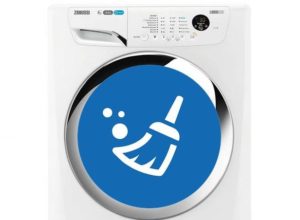 The automatic machine comes into contact with water and detergents almost daily. All this leads to the fact that impurities and soap deposits settle on the internal elements of the washing machine. To this are added fabric fibers, hair, lint and other debris that gets into the drum.
The automatic machine comes into contact with water and detergents almost daily. All this leads to the fact that impurities and soap deposits settle on the internal elements of the washing machine. To this are added fabric fibers, hair, lint and other debris that gets into the drum.
In order not to cause the equipment to break down, and not to risk the health of family members, it is simply necessary to “wash” the machine periodically. We'll tell you how to clean a Zanussi washing machine and how often you need to carry out such procedures.
What activities does a complete cleanup include?
Systematic and comprehensive care is important when caring for your washing machine. There is no point in washing only the powder receptacle once a month - with this approach it will not be possible to achieve the desired effect. It is important to clean the machine regularly and completely.
All housewives, after each use of the equipment, are recommended to: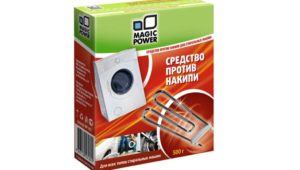
- wipe the walls of the drum dry from droplets of water, remove any soap deposits remaining inside;
- remove the detergent container and rinse it in warm water;
- remove water and dirt remaining in the hatch door cuff;
- Wipe the body of the machine with a dry cloth.
“Superficial” measures must be carried out every time after using the washing machine. In addition, more “deep” procedures are periodically necessary. Every three months you need to clean the garbage filter, and every six months you need to clean the “insides” of the machine from dirt and scale.
Twice a year, be sure to carry out a comprehensive “cleaning” of the Zanussi washing machine using special products.
Full washing of the machine from dirt and scale involves turning on a “idle” wash, adding a special product to the dispenser or drum.You can choose the cleaning composition at your discretion - use a store-bought concentrate or budget life hacks.
When purchasing a product in a store, be sure to look for the “Anti-scale” mark on the packaging. Compositions are sold that prevent the appearance of limescale - they are not suitable for comprehensive cleaning of the machine.
Among the folk remedies, baking soda, vinegar and citric acid have proven themselves to be excellent in the fight against scale. The effect of their use is comparable to the result after using household chemicals.
The dosage of the cleaning product is prescribed on the packaging. You cannot pour the concentrate “by eye”. An excess of “chemicals” can damage the rubber elements of the machine. The composition is added either to the cuvette or to the drum - all in accordance with the instructions. Then all that remains is to start the “idle”, high-temperature cycle and wait for the end of the program.
While the machine is cleaning itself, it is better not to leave it. If there is too much scale inside, a piece may break off and get stuck in the drain system, threatening the “life” of the machine. Then the washer will hum, and you may hear knocking and crackling noises. In this case, you must immediately stop the program and clean the debris filter. The cycle can then be resumed.
Removing dirt from the bottom of the tank
To clean from dirt, you need to run a standard washing program, adding any cleaner to the dispenser: citric acid, bleach, vinegar, or a special store-bought product. The cycle should last at least one and a half hours, the water should warm up to 75-95°C. It is important that the drum is empty.
Then you should rinse the washing machine two or three times. To do this, run a short wash program or the “Super Rinse” option.This is necessary so that the detergent, along with the soaked dirt and pieces of limescale, leaves the machine.
When using household chemicals for cleaning, strictly follow the dosage - large quantities of concentrate can corrode some parts of the washing machine.

In addition, you can clean the inside of the drum manually. The algorithm of actions will be as follows:
- wet a soft sponge or cloth;
- wipe the drum walls with a wet cloth, moistening the metal surface;
- dip the sponge in detergent (special powder or gel);
- treat the surface of the drum, focusing on the plastic “ribs”, joints and edges;
- close the hatch door. Leave the soapy drum to “soak” for one hour;
- Use a dry cloth to remove dirty foam;
- Rinse the machine by running any washing program.
A comprehensive cleaning option would be preferable - this will clean not only the drum, but also the tank and various pipes. However, manual “cleaning” of the washing machine will also not be superfluous.
Don't Skimp on Standard Cleaning
An integral stage of a comprehensive washing machine cleaning is washing the garbage filter and drain hose. Of course, it’s even better to touch the pump, pipes and pump impeller. It is in the drainage system that all the debris that gets into the drum accumulates, so special attention must be paid to cleaning it.
To clean the garbage filter: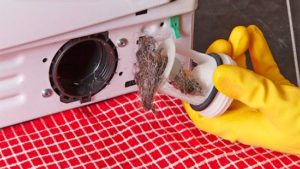
- turn off the power to the Zanussi washing machine, turn off the water supply tap;
- cover the floor around the machine with unnecessary rags;
- prepare a basin to collect water;
- remove the technical hatch door, having dealt with the latches;
- find the black plug of the “trash can”;
- place a basin under it;
- turn the filter from right to left one turn, drain the water;
- pull out the filter element;
- wash the “spiral” in a warm soapy solution. If necessary, you can soak the filter in water with the addition of citric acid;
- clean the seat from dirt. Using a damp cloth, remove all debris stuck to the walls.
It is advisable to immediately clean the drain pump and impeller. To do this, Zanussi should be placed on the left side (it is important not to place the machine on the right side, otherwise the water remaining in the dispenser may flood the control panel and lead to the “tidy” shorting). The next steps are:
- Use a flashlight to illuminate the bottom and find the pump;
- unscrew the impeller from the pump;
- remove tangled hair, threads and other debris from the blades;
- clean the pump itself and the volute from dirt deposits;
- fix the impeller in place, return the machine to a vertical position.
Be sure to pay attention to the drainage hose. The corrugation should be unhooked from the siphon and the body of the machine and washed under running warm water. If necessary, you can soak the drain hose for 30-50 minutes in a citric acid solution to ensure that the stuck-on dirt is washed out from the inside.
Some models of Zanussi washing machines have an inlet filter. It is located in the inlet hose and serves to purify the water entering the washing machine. It is on this mesh that the main “impact” falls; all impurities settle there. That's why it's so important to wash it regularly.
To clean the inlet filter, you need to turn off the water supply tap, disconnect the inlet hose and remove the nozzle with pliers. You can remove plaque and rust with a regular toothbrush and soapy water.
Powder container
The detergent drawer also needs regular cleaning. Particles of detergent remain on the walls of the tray, and impurities contained in tap water also settle here.In addition, mold grows very quickly in a humid environment. All this harms not only the machine, but also things and the health of household members.
The powder receptacle must be rinsed and dried after each use of the washing machine.
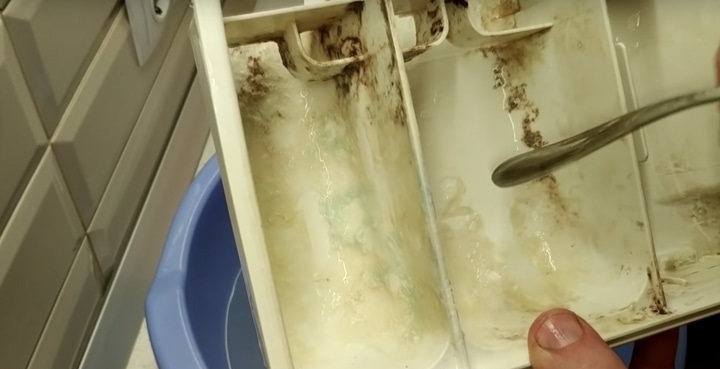
If you follow the rules and constantly rinse the dispenser, this will be enough to clean it. If the cuvette is not washed for a long time, it will be more difficult to remove the deposits. You will need to soak the container in a citric acid solution or use vinegar and soda. When you can’t remove hardened powder using folk remedies, you can buy a special cleaner for plumbing fixtures. The concentrate is used according to the instructions.
Interesting:
1 reader comment

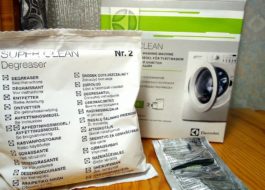
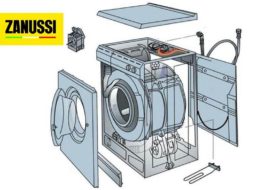
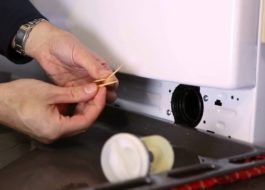

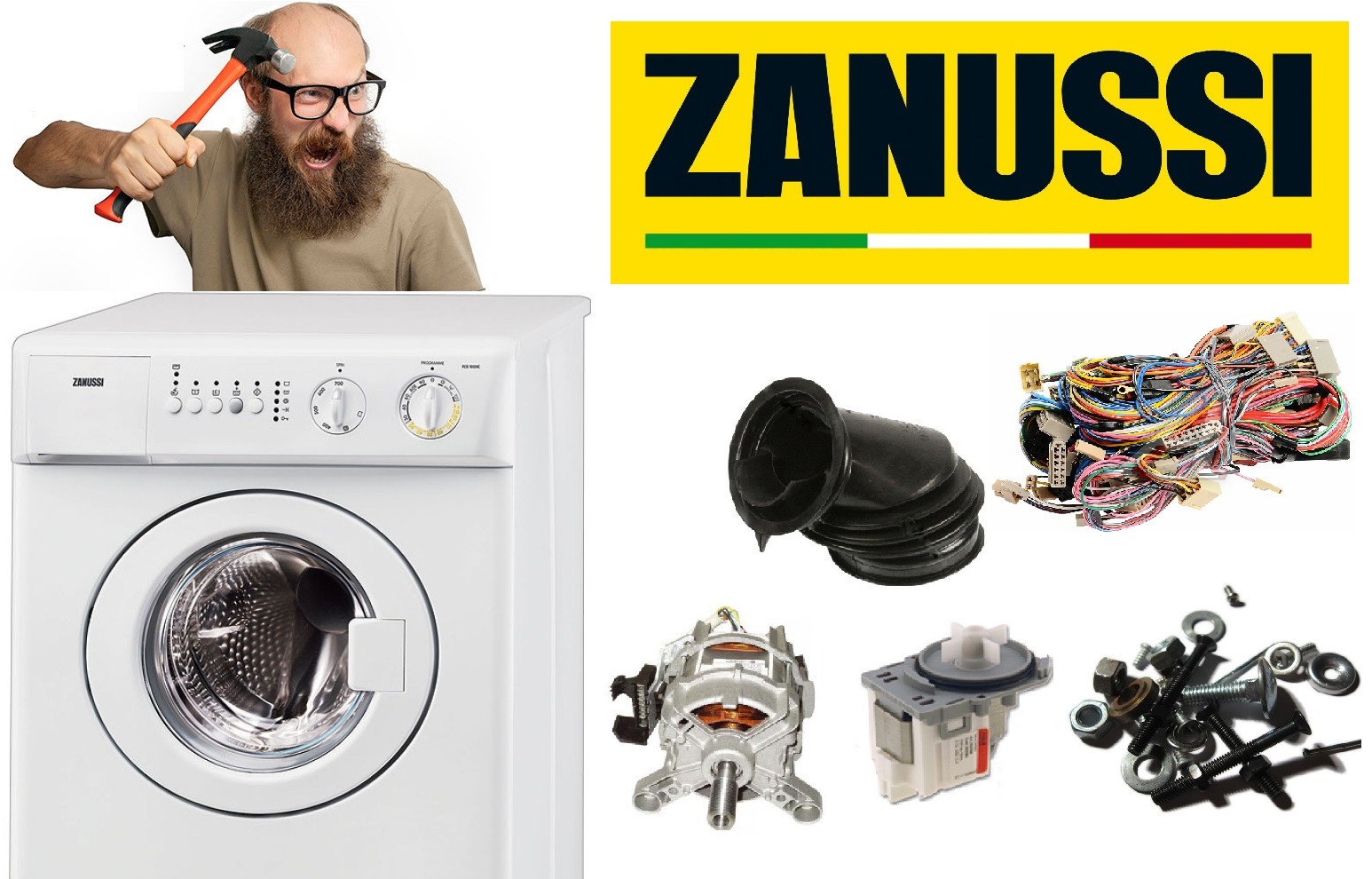
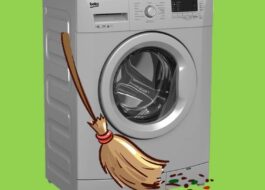














Why did I buy a Zanussi Lindo100. Do you need to disassemble the machine to get it out? There is a plastic part in the drum, but it does not open. Vertical machine